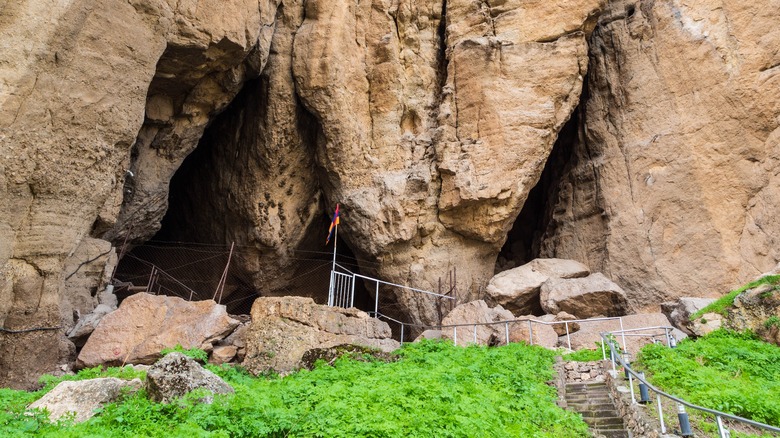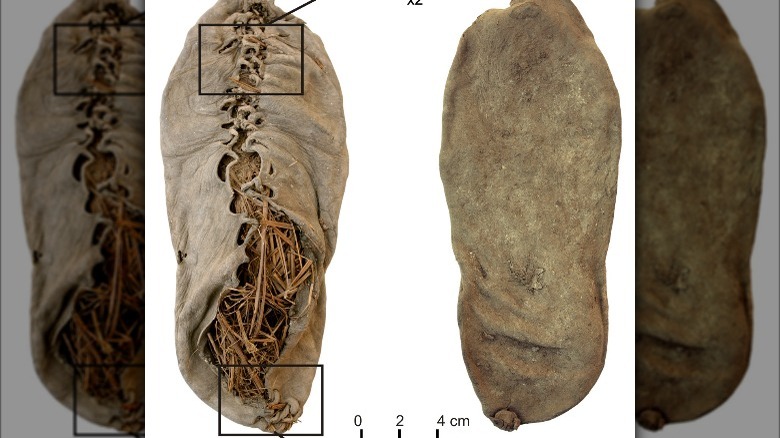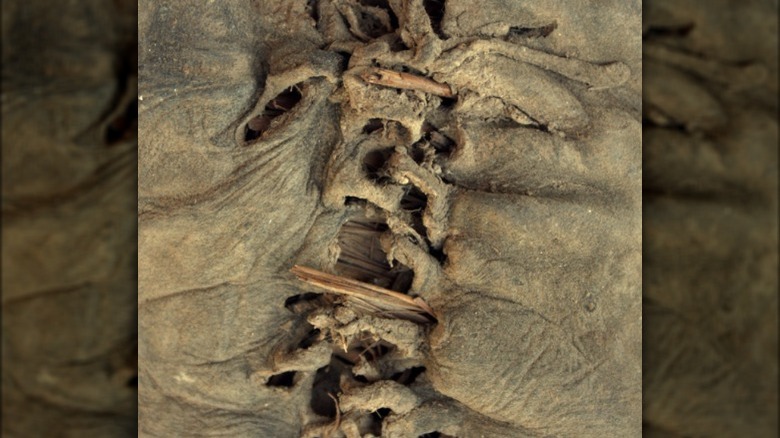An Armenian Cave Was Home To The Oldest Leather Shoe In The World
In 2008, an ancient shoe was found in an Armenian cave, according to BBC News. Prehistoric shoes were discovered before, most notably, sandals made from sagebrush bark dating from around 3500 B.C. were uncovered in an Oregon cave in 1936, as Sole Science explains. In 2005, a roughly 2,000-year-old Iron Age leather shoe was also found in a United Kingdom quarry, based on further BBC News reporting. And in 1991, so-called "Ötzi the Iceman," a mummified man who lived around 3300 B.C., was recovered in the Austrian alps, still wearing his shoes, per Britannica.
What made the Armenian discovery so remarkable, though, was the age of the shoe uncovered; it predates the oldest-known footwear discovery from Oregon by some 2,000 years. This means that the person who wore the shoe lived before Stonehenge was erected in England and the Pyramids of Giza in Egypt were built. Also of note, the Armenian shoe, found in the so-called Areni-1 cave (pictured), was constructed similarly to what Ötzi was wearing a few hundred years later. Older shoes made from plant fiber have been found in Missouri, but the Areni-1 shoe is, without a doubt, the oldest shoe made of leather found so far.
The Armenian shoes were made from cowhide
As BBC News goes on to note, the Areni-1 shoe (pictured) was discovered in a cave long known to have been a ritual site from the Neolithic period (via Atlas Obscura). Radiocarbon dating puts the shoes at around 5,500 years old, according to National Geographic. The footwear was remarkably well preserved, likely due to the cool and dry conditions in the cave and that the floor of the cave was covered in layers and layers of sheep excrement built-up over the millennia. The shoe was entombed underneath, according to the BBC News report.
In modern terms, the shoe was something like a woman's size 7 (U.S.), but it could have also been worn by a man from the period. Ötzi, for example, who lived later, was around 5 feet 2 inches tall, per Britannica. On the age of the shoe, archaeologist Dr. Ron Pinhasi an archaeologist from the University College Cork in Ireland, who co-authored the Areni-1 study said (via BBC News), "We thought initially that the shoe and other objects were about 600-700 years old because they were in such good condition," and it was only after the material was dated by two radiocarbon laboratories that it was determined the shoe was older than the shoes worn by Ötzi the Iceman.
The Areni-1 shoe was stuffed with grass
Also of note, the Areni-1 shoe was made from a single piece of leather cow-hide, shaped to fit the wearer's foot, and stuffed with grass, likely for insulation, as National Geographic reports. Though more advanced, Ötzi's shoes were constructed similarly, per Britannica. National Geographic's report on the Areni-1 shoe also mentioned that the method by which the shoe was made — from two layers of leather, which were then tanned — was, at that point, new technology. The overall style of the shoe is similar to footwear still worn in the Balkan region today and is known as opanke.
The shoe — worn by someone who walked great distances in rough conditions — also likely served two functions: Practical footwear, but also as an emblem of tribal allegiance. The shoe laced both in the front and back and was fastened with a strip of leather. Though the Areni-1 shoe is the oldest leather shoe ever found, experts believe that humans began to wear shoes at least 40,000 years ago, per National Geographic. On the remarkably well-preserved Areni-1 shoe, modern high-fashion shoemaker Manolo Blahnik told Nat. Geo. that it's astonishing "how much this shoe resembles a modern shoe!"


